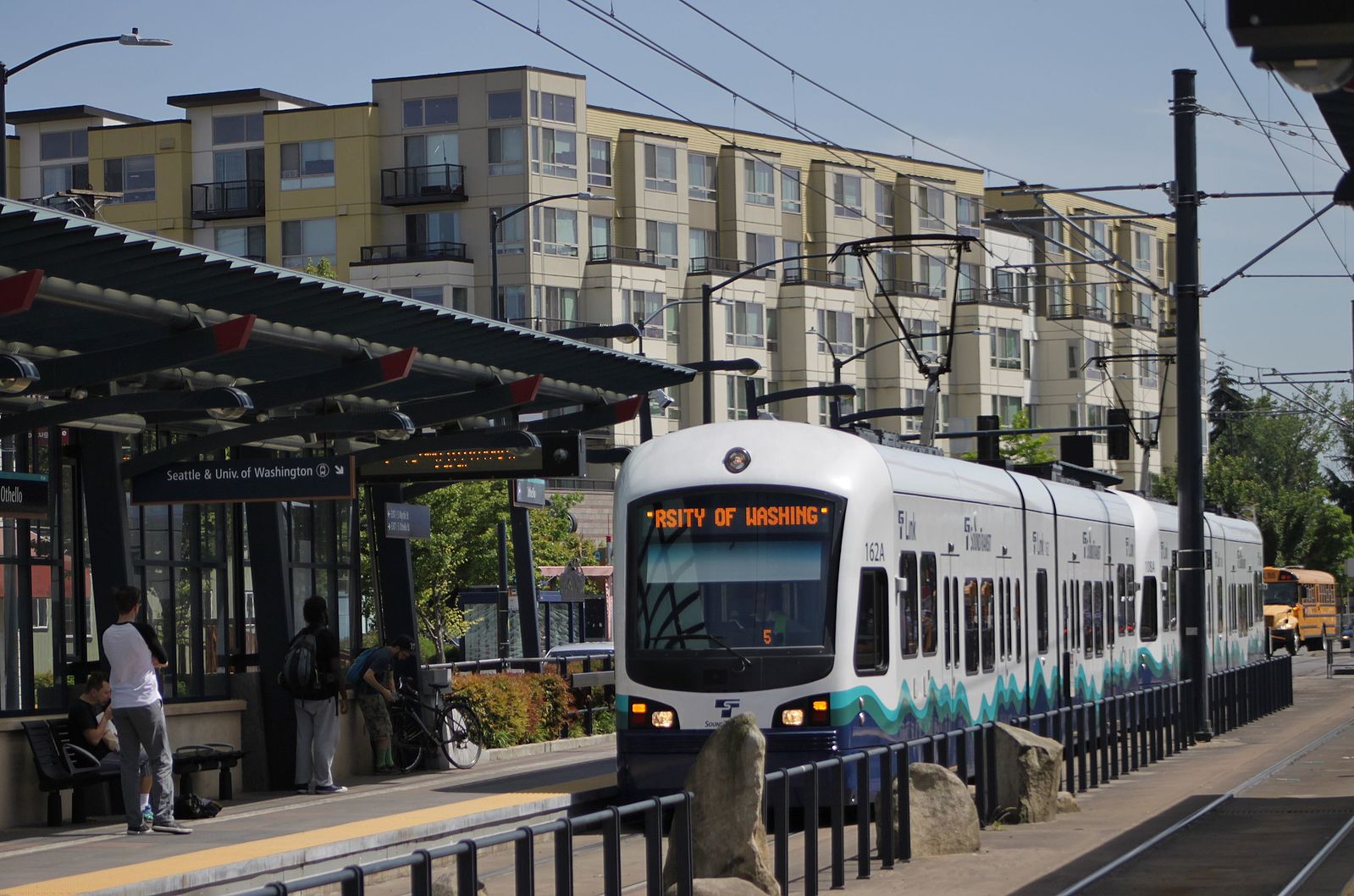New efforts by federal and state authorities to encourage the construction of housing in walkable and transit-rich communities suggests that many cities' best chance at progressive zoning reform will come from the top down, rather than the grass roots.
On May 16, the Biden administration announced a slate of new initiatives aimed at increasing housing production in dense U.S. cities, including a promise to immediately "reward jurisdictions that have put in place land-use policies to promote density and rural main street revitalization." The White House also explicitly highlighted "transit-oriented development" as one of its primary goals, signaling a rare willingness to exercise federal influence over city-building policies that are typically left up to local policymakers alone.
Sustainable transportation and affordable housing advocates heralded the news, though some cautioned the feds need to think more deeply about what zoning reforms, specifically, will have the biggest impact — before they start writing checks.
Legalizing the construction of apartment buildings near a light rail line, for instance, might seem like an obvious first step, but that much-needed housing may not get built if municipalities don't also address "process requirements like mandatory public hearings and substantive requirements involving lot configuration, building size, and occupancy, among other things," zoning expert Sara Bronin wrote in a study released last year. Identifying meaningful best practices for unique communities, Bronin argues, requires deep analysis that the feds won't be well equipped to do until they take on the Herculean task of mapping the impact that existing zoning practices are having right now. (Fortunately, advocates have given them a head start.)
Advocates were less hesitant to praise a wave of state-level zoning reforms that broke around the same time as Biden's announcement, including a new Oregon law that requires cities (where about two thirds of the state's population live) to reduce or eliminate parking minimums, allow for more density in key areas, and more closely coordinate local housing and transportation plans to discourage solo car use. That victory follows on the heels of a similar reform in Connecticut, which capped the number of parking spaces local governments could require developers to build last year.
Sightline's Catie Gould wrote that while such top-down policies are a relatively recent phenomenon, they're become a more prominent goal of advocates, since "cities won't act until states do" on some of the most critical reforms.
"Implementation at the state level means fewer battles we, at the local level, have to fight,” added Eleanor Ponomareff, city council president in Talent, Ore.
Gould notes that another effort to control excess car storage is underway in California, thanks to an assembly bill that would finally bar cities from mandating parking near transit stops after years of legislative attempts. That policy, though, faces likely pushback from NIMBY groups that prefer to retain the current car-dominated system of local control; those voices recently won in the state of Washington, which attempted to scale back parking requirements statewide earlier this year before a crushing defeat in the state House of Representatives.
Oregon's Land Conservation and Development Commission adopted major STATEWIDE parking reforms today. By the end of 2022 (!) 61 cities in the 8 largest metro areas must repeal costly mandates near transit & for affordable and small homes. Deeper reforms required in 2023!
— Tony Jordan, IAFG (@twjpdx23) May 20, 2022
Whether change comes from the federal or state level, many advocates believe it's time to encourage higher governments to protect cities from bad land-use policies before the vocal locals get a chance to shout down change at the community level. But the question remains whether states will always use that power for progress if it's given to them — or whether they'll just further enshrine car dependency into law.
That's part of why groups in transit-hostile states — such as the Michigan chapter of the American Planning Association — have focused their efforts not on swaying state lawmakers, but empowering local ones. Those efforts include developing a "how-to zoning reform guide" that can help local governments facing problems such as neighborhood opposition, overly restrictive zoning codes. Small communities also often lack enough planners.
One thing's for sure: the roadblock of bad zoning has to be removed from the path to sustainable transportation progress in U.S. cities. The only question is whether it will happen through federal nudges, sweeping state laws, or hard-fought local campaigns — or maybe, some combination of all three.






